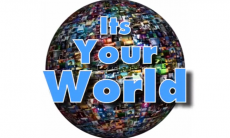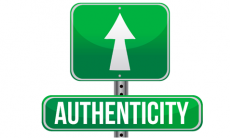As a couch potato addicted to sports viewing, every four years the sheer greatness of the Olympics mesmerizes me. In 2012, looking at the various national teams–and there are 204 of them represented in London–it’s evident that diversity is a major asset for countries looking for Olympic glory, and that goes way beyond physical appearance. The two countries I cheer for–Brazil and Canada–are particularly diverse. For example, the Brazilian roster reveals a wide range of somewhat unexpected family names: Taylor, Lin, Bellucci, Scheidt, Zarif, Kitadai, Schwantes and so on. Canada brings its own mix of a rich tapestry of immigrants: Benfeito, Ahmed, Gomez, Ng, Mehmedovic and Wozniak. Along the same lines, diversity at the workplace is getting more and more attention: chances are that, in your own organization, there are several diversity initiatives.

In London 2012, you’ll find athletes from lavish upbringings (prince Abdullah Al Saud, from Saudi Arabia) and poor as well (Javier Culson, from Puerto Rico), from the very young (13-year-old Togo swimmer Rebecca Adzo Kpossi) to the not-so-young (71-year-old equestrian Hiroshi Hoketsu) and from the highly educated (Scottish Katherine Grainger, Honours law degree from Edinburgh University, a Master of Philosophy degree in Medical Law from Glasgow University and is studying for a PhD in Law at King’s College London) to the ones who just started high school (Joyce Tafatatha, from Malawi). There were the incredible stories of a legally blind archer (South Korea’s Im Dong-hyun) smashing the first world record of the games, and a double-amputee runner (Oscar Pistorius, from South Africa) reaching the semi-finals of the 400 meters race. Simply astonishing.
Diversity flourishes in the workplace, too, even if we don’t shine an Olympic torch on it. I would guess that most diversity initiatives are related to the more prominent groups, based on ethnicity, age, gender, sexual orientation or physical ability. That’s a great start, and a necessary one, but real diversity goes much broader and deeper than those five dimensions–and often those dimensions are less important than more subtle ones. I speak from personal experience: being of a mixed Korean and Japanese background, but born and raised in Brazil, I have never actually been to Korea nor Japan, and don’t speak their languages. Even though I look very East Asian, in my mind I’m as Brazilian as Ronaldo or Antonio Carlos Jobim. Often throughout the course of my professional career, I’ve been encouraged to participate in East-Asian diversity groups but always ended up feeling more at home being a member of the Latin-American ones. My invisible diversity plays a significantly stronger role in the way I speak and behave than my visible one. Ironically, once others realize that I’m more Brazilian than Asian, the conversations seem to fall into another stereotype: the “soccer-samba-beach” combo, where every person from Brazil is supposed to be like Disney’s José Carioca.
Our brains tend to make sense of the world by defining simple taxonomies and slotting everything that’s known in one of those artificial categories. This makes a complex world much more manageable and less scary. However, that algorithm does not work well when the task at hand is diversity. Diversity management implies the ability to recognize the unusual, the complex and the subtle. The invisible diversity can be as influential–or even more–than the visible or behavioral one, but we very rarely pay attention to it. We all communicate, collaborate and connect to each other in very different ways. Understanding the when, what, who, where and how of those interacting patterns is fundamental for creating a thriving workplace.
Social business platforms often fall in the same trap: instead of catering for a very diverse workforce, several of them seem to assume that the whole digital social world is like Facebook or Twitter. They fail to recognize that, even though there are 900 million users on Facebook, there are six billion people who are not there, and don’t like it, don’t need it or don’t even know about it.
You can’t successfully deploy a communication or collaboration platform for a large enterprise using a medium that only resonates with your social digital bees. There are plenty of brilliant individuals in your organization who still love the good ol’ face-to-face, phone or email interactions. And don’t assume they are the old guard: you’ll be surprised with the number of millennials who find the steady stream of status updates annoying or distracting. Paraphrasing Mark Twain, the reports of email’s death have been greatly exaggerated.
In the long term, social business platforms that understand that diversity of communication needs in the workplace will do much better. Acknowledging the diverse mix of the communication preferences in the workforce means letting people interact in the way they feel most comfortable with: via email, SharePoint, Instant Messaging, voice, video, microblogging, face-to-face, wikis, blogs, or whatever rocks their boat. Think about your social business platform as being the hub, with multiple input and output channels. There are multiple ways to feed the hub, and to consume the hub’s content.
As long as all roads take you to and from Rome, and Rome is a thriving, civilized and pleasant city, you don’t actually care if people come or go on foot, by horse or chariots. Like in the Olympics, there’s value in diversity, and you never know where your gold, silver or bronze medals may be coming from, so make sure your social business platform is inclusive, rather than just a “cool kids’ club.”






